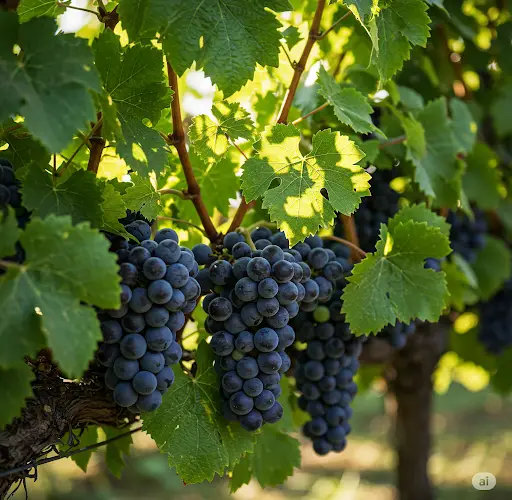Grapevines are beautiful, productive, and rewarding plants—but only if properly cared for at the right time. One of the most important stages in grapevine development is just before flowering. It’s at this moment that a gardener’s actions can dramatically influence the size, health, and quantity of grape clusters.
Many experienced growers follow a key pre-flowering routine that helps the vine focus its energy where it matters most. With a few simple steps, you can support your grapevine’s natural development and set the stage for large, juicy, and abundant grape bunches.
Why Pre-Flowering Care Is Crucial
Grapes, like all fruit-bearing plants, go through several stages before harvest: bud break, leaf growth, flowering, fruit set, and ripening. The flowering stage is when the plant prepares to produce fruit—and how it’s supported right before this point determines how well it performs.
During the pre-flowering period, grapevines begin allocating energy to form the flowering structures. If the vine is burdened by excess foliage, weak shoots, or nutrient deficiencies, flower formation and fruit set may be compromised. However, when managed properly, the vine can channel its energy into forming larger and more numerous grape clusters.
Step 1: Timely Pruning for Better Airflow and Light
One of the most impactful practices is green pruning, done just before flowering. This doesn’t mean cutting off structural parts of the vine, but rather gently managing the green growth that develops rapidly in spring.
Here’s what to focus on:
-
Remove excess side shoots (also called suckers) that appear at the base or along the main trunk.
-
Thin crowded shoots to ensure even spacing, allowing for better sunlight penetration and airflow.
-
Pinch off the tips of very long shoots if they’re growing wildly without fruiting clusters.
This type of selective pruning redirects the plant’s energy from excessive leaf production into flower and fruit development. It also reduces the risk of fungal diseases, which can spread quickly in dense, shaded growth.
Step 2: Apply a Balanced Nutrient Boost
Feeding the grapevine with the right nutrients before flowering can make a remarkable difference in the size of the future grape bunches. At this stage, vines benefit most from phosphorus and potassium, which support flower and fruit development.
Homemade Grape Booster Recipe:
-
10 liters (approx. 2.5 gallons) of warm water
-
1 tablespoon of baking soda
-
1 tablespoon of wood ash (rich in potassium)
-
1 tablespoon of bone meal or fish meal (rich in phosphorus)
Mix the ingredients thoroughly and let the solution settle for a few hours. Then, water the base of the grapevine with about 1–2 liters of the mixture per plant. Avoid wetting the leaves to reduce the chance of sunburn or fungal problems.
Apply this treatment about 7–10 days before the expected flowering time.
Step 3: Foliar Spray to Strengthen Buds
In addition to root feeding, applying a foliar spray made from diluted seaweed extract or compost tea can help nourish the plant through its leaves. These sprays deliver micronutrients like magnesium, calcium, and iron directly where they’re needed, supporting flower formation and improving resilience.
Spray in the early morning or late afternoon to avoid leaf burn, and never during strong sun or windy conditions.
Step 4: Consistent but Moderate Watering
Right before flowering, it’s essential to keep the soil evenly moist—but not saturated. Grapevines don’t like standing water, especially during sensitive stages like flowering and fruit set. Use a mulch of straw or compost to help retain soil moisture while also suppressing weeds.
Avoid overwatering, which can cause weak flower development and increase the risk of fungal diseases.
Step 5: Gentle Support and Training
Make sure the vine is properly supported, especially if you’re growing it on a trellis or arbor. Gently tie new growth to the structure to prevent it from flopping or tangling. This encourages upward and outward growth, giving each shoot ample room to develop fruit.
Results: Larger, Healthier Grape Clusters
When these practices are followed consistently, the results speak for themselves. Flowering will be more uniform, clusters will be denser and larger, and the grapes will ripen evenly later in the season.
Even a well-established grapevine can benefit greatly from this pre-flowering care. Think of it as giving the plant a head start—a nutritional and structural boost—just when it needs it most.
Final Thoughts
Preparing your grapevines just before flowering is one of the most strategic and rewarding things you can do as a grower. A combination of light pruning, targeted feeding, and mindful watering primes the plant for peak productivity. Whether you’re growing grapes for fresh eating, juicing, or winemaking, this simple routine will help you achieve fuller, more impressive bunches year after year.



